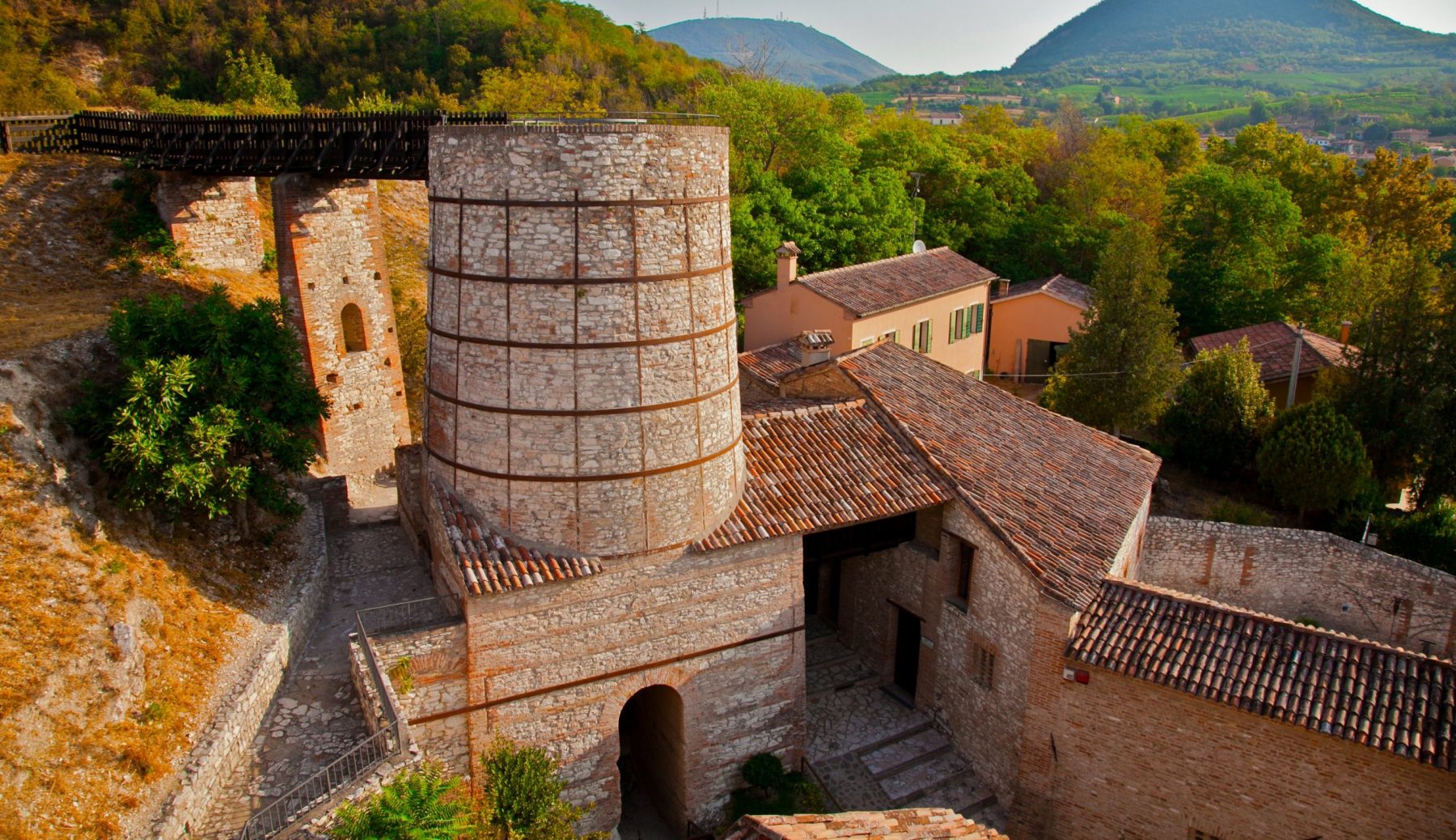
Il Geopaleontological Museum of Cava Bomba at Cinto Euganeo: in 1987, following the discovery the discovery of an important deposit of fish fossils in the quarry, it became paleontology museum. In various rooms displays collections geological, also of the Euganean Hills, the historic collection of Count Nicholas da Rio, the collection “Giradi that includes instruments of labor in the quarry, some models of life-size dinosaurs in the path which runs through the park and Monte Cinto.
The Geopaleontological Museum of Cava Bomba at Cinto Euganeo complex stands both as an important example of industrial archaeology concerning lime production in the area of Euganean Hills, and as a valuable proof of the recent past productive situation. The precise refurbishment has allowed to reconstruct the whole productive cycle and a route outside the building retraces the different phases of the productive cycle of the old kiln. The small inner yard hosts an exhibition of tools for working and cutting stone materials quarried from the Euganean Hills. The museum includes three main sections: the first illustrates Euganean Hills geology, the second the area mineralogy, and the last one hosts the Da Rio collection. The idea to refurbish the complex and use it as the site of this original museum was conceived after the find of Cretaceous fossil fish specimens (dated 92 million years ago) made around the mid-70s in the limestone quarry near the kiln. The finding represents the core of the geologic exhibition which is introduced by a didactic section on Earth sciences showing geological phenomena of the Euganean Hills area. The mineralogy section hosts a collection of minerals coming from all over the world. The last section displays the substantial ‘Da Rio’ geologic collection and stands as a typical example of scientific museum of the first half of the 19th century. The collection includes minerals, stones and fossils gathered between the end of the 18th century and the first half of the 19th century by count Niccolò Da Rio, a literate and a notable natural sciences researcher from Padua. An open-air geologic park has been recently inaugurated to make room for large stone specimens and full-scale models of prehistoric animals.
Info
Via Bomba 48, Cinto Euganeo (PD)
Tel +39 049 8910189
Fax +39 049 8929777
[email protected]


